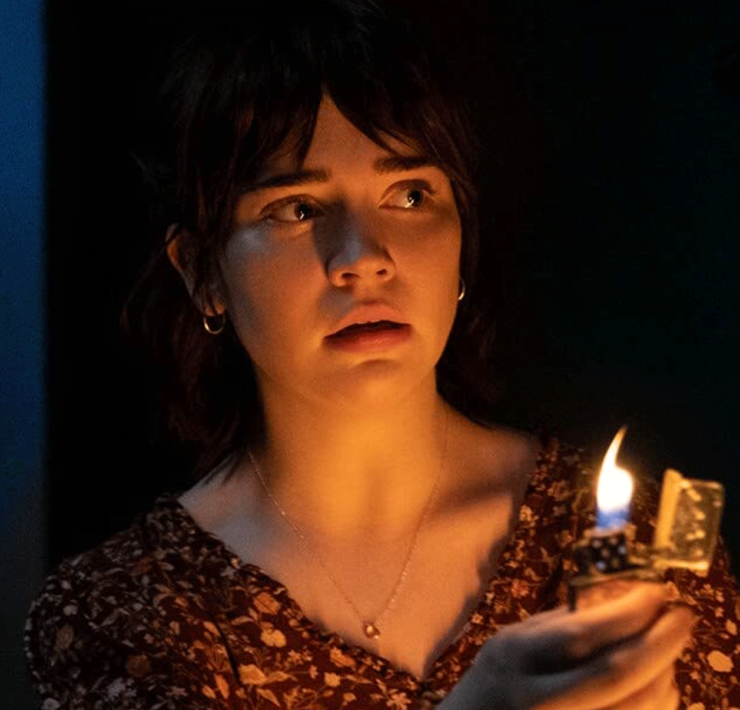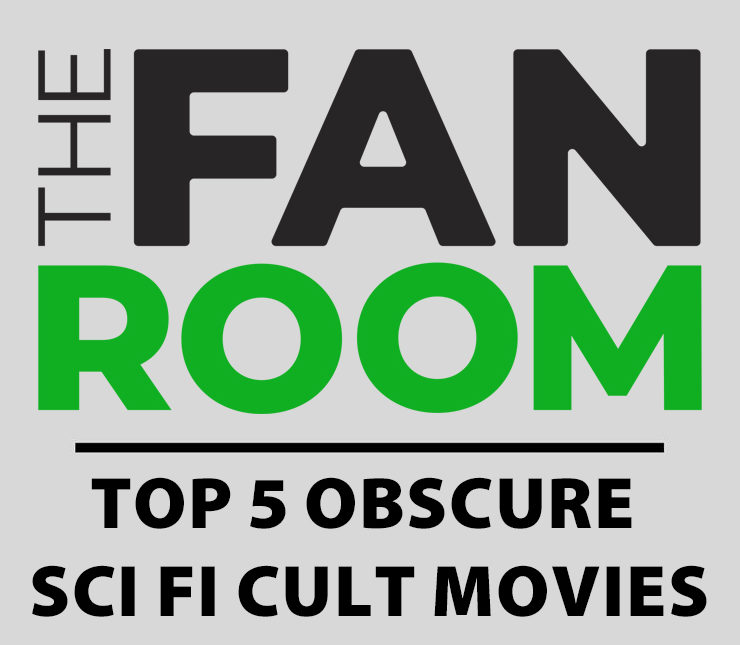‘Winnie-The-Pooh: Blood and Honey’ Makes Money…For Better or Worse

Just over a year ago, in January of 2022, A. A. Milne’s beloved Winnie the Pooh entered the public domain. While Disney still holds copyright over certain characters, anyone is free to create a story with details from the 1926 book. Even if you want to Winnie-the-Pooh to go on a killing rampage to exact revenge on Christopher Robin.
The Road to Release
Winnie-the-Pooh: Blood and Honey started an internet frenzy when the first official trailer dropped last August. The concept alone would have been enough to warrant a buzz, but what pushed it over the top was the character design. Like many indie movies in the horror scene, Blood and Honey was made on a tight budget, favoring practical effects over CGI. A good portion of that budget went into prosthetics for Pooh and Piglet; money well spent.
With well-made costumes and plenty of gore, the trailer was an instant hit with horror fans. Even if slashers aren’t your thing, the concept of “mass murderer Winnie-the-Pooh” got a lot of attention—enough attention to go viral.
What would have been a small, independent film turned into a global phenomenon. The initial October release was pushed back to February for wider distribution. Fathom Events signed on to handle the release showings. A one-night event turned into a longer window—just so more people could enjoy Pooh’s twisted bloodlust.
If you’re not lucky enough to have a showing in your area, here’s what you’re missing.
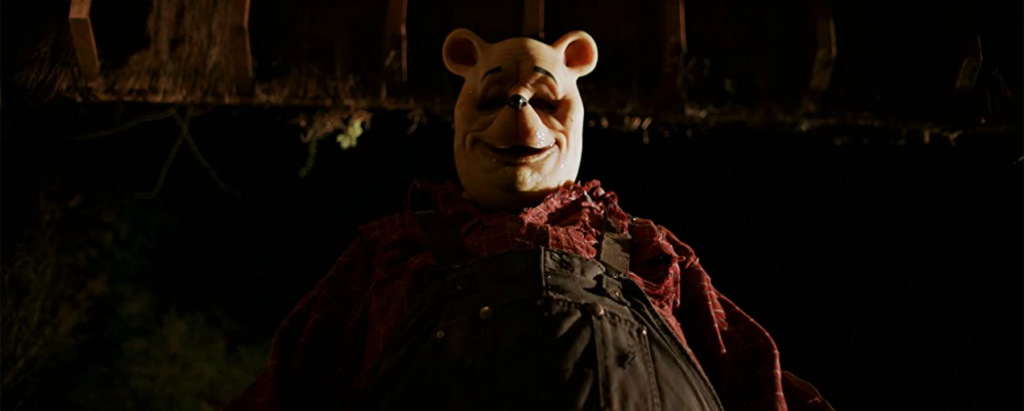
Willy Nilly Silly Old Scare
Despite its popularity, I actually managed to avoid most plot details about Winnie-the-Pooh: Blood and Honey. Walking into the theater, I wasn’t entirely sure if I was about to see two serial killers wearing masks or eldritch monsters who were Pooh and Piglet. (Spoiler Alert: it’s the latter.)
The movie opens with an unsettling animation, a frightening twist on the original illustrations. The storybook sets the scene by explaining that Pooh and his friends were hybrid creatures, part animal and part human, who Christopher Robin befriended in his youth. When Christopher grows up and leaves for college, he leaves his childhood friends behind with no way to feed or take care of themselves. Starved and desperate, they eat Eeyore to survive; like the poor guy didn’t have enough bad luck.
It’s as creepy as it is silly, which makes it the perfect start to the film. Then the plot falls into the familiar pattern of a 70s’ or 80s’ slasher film: a group of pretty girls, a cabin in the woods, over-the-top violence, and very little logic. There’s creative kills, gratuitous gore, and just a taste of totally unnecessary nudity. For fans of the niche genre, Winnie-the-Pooh: Blood and Honey checks all the boxes—but it’s certainly not for everyone.
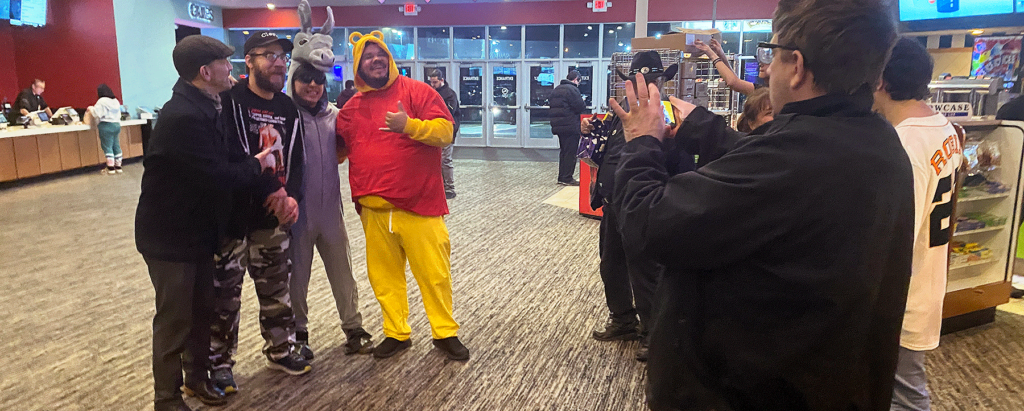
The People Who Love It
People came in droves to see this movie and, for the most part, the whole audience reacted in the same way. There aren’t many outright jokes, but the room was still full of laughter as the body count climbed higher in the most ridiculous ways. It’s impossible not to laugh when a grizzled, yellow bear is sprinting full tilt at the camera in bloody overalls. Gruesome kills were met with hisses and groans, then immediately followed by giggles as the characters continue making terrible decisions. Isn’t that what campy horror is all about?
At our showing, the credits rolled with thunderous applause. Safe to say, the film exceeded their expectations. That’s certainly saying something, considering just how excited some fans were; some even came in costumes. Winnie-the-Pooh and Eeyore had a line of people waiting to take photos with them on their way out of the theater. Thankfully, they still took some time to chat with us.
“The best part is, we just met tonight,” says Lionel, fiddling with the yellow ears on his headband. “I have to laugh because I got stood up, and I was like, ‘Oh, I’ll be sitting by myself.’ Then [Nick] sits down next to me, I’m like, ‘Oh no, we good!'”
Lionel came to the movie prepared, ordering his Pooh Bear sweatpants and T-shirt long before the showing. His new friends, Nick and Brandon, decided to dress up last minute. Luckily, Nick already had his Donkey costume from Shrek, so it was just a matter of finding some Tigger gear to complete their look.
“I thought [the trailer] looked a little cheap,” Nick admits, “but when I saw this—it actually surpassed the trailer. The quality was so good, and it was so funny.”
Lionel is quick to agree. “It gave me that old-school, 80s’ vibe that you dig? A little corny, but still fun.”
“Some of the things you could tell were fake, but it wasn’t in a bad way,” adds Brandon. “Bad is good.”
“I gotta say, this movie was better than therapy,” Nick concludes with a laugh.
“This is therapy,” Brandon corrects him. “It’s therapeutic.”

The People Who Didn’t
Horror is a constantly evolving genre. The tropes and archetypes change with our society, reflecting our values, our fears, and our hopes. Take some of our more recent reviews: The Invitation, The Menu, Missing. All of them build off the classic “final girl” character by adding a modern twist and, more often than not, a bit of commentary about wealth inequality. It’s hard to do that in a new, effective way, so there’s something to be said about moving away from the formula. Winnie-the-Pooh: Blood and Honey opts for that “old school 80s’ vibe,” but at times, it feels less nostalgic than regressive.
You won’t find any final girls in this movie. Our main character, Maria, is set up like one. She’s recovering from a traumatic experience, where a man who was stalking her broke into her home. The story’s told through flashbacks, where we get a lengthy shot of the intruder trying to take off Maria’s top while she’s asleep. For something that takes up so much time in the exposition, it holds little to no relevance in the plot. Maria’s backstory is used to justify her girls’ trip to the woods and the fact that she owns a gun—two facts that easily could exist without the intrusive close up.
At least Maria gets a backstory. There’s enough exposition to differentiate the rest of the characters, but not much depth and virtually no development. The only change the heroines make in this movie is the shift from “alive” to “dead.” There’s no concern about preserving anyone’s dignity either. The Instagram-obsessed blonde dies hogtied in her bikini, another girl with a thick machete shoved down her throat. (The word “phallic” seems overused in horror film analysis, but it couldn’t be more fitting here.) Each kill toes the often uncomfortable line between, “Is this excessive because it’s consciously comical, or excessive for the sake of being excessive?”
There were three women on the production crew. In case you were wondering.
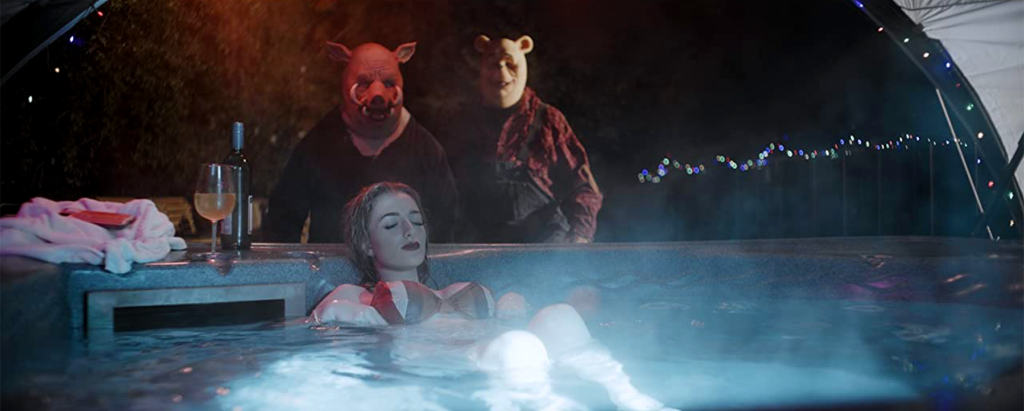
An Undeniable Success
But the fact of the matter is—that doesn’t matter. It doesn’t matter who was involved in the production. It doesn’t matter how many people actually liked what they saw. It doesn’t matter that the film has a 10% critic score and an audience score in the fifties on Rotten Tomato. The only thing that matters is that it worked.
Writer and director Rhys Frake-Waterfield took his concept, fine-tuned it, and turned it into something bigger than anyone could have hoped. Well—anyone but Rhys Frake-Waterfield, that is. A few months ago, audiences might’ve said it was unrealistic to be planning sequels for a film like Winnie-the-Pooh: Blood and Honey. Now, you can be sure there’s enough money in that pot of honey to bring Pooh Bear back to the blood-soaked big screen.
–


